Research
Single-sided subduction (SSS): High trench retreat rate & back-arc extension
Models can self-consistently generate a variety of trench retreat rate and induce different extent of extension within a homogeneous and mobile overriding plate. This is achieved by verying merely the age/thickness of the subducting slab and overriding plate under a well-tested rheology setup.
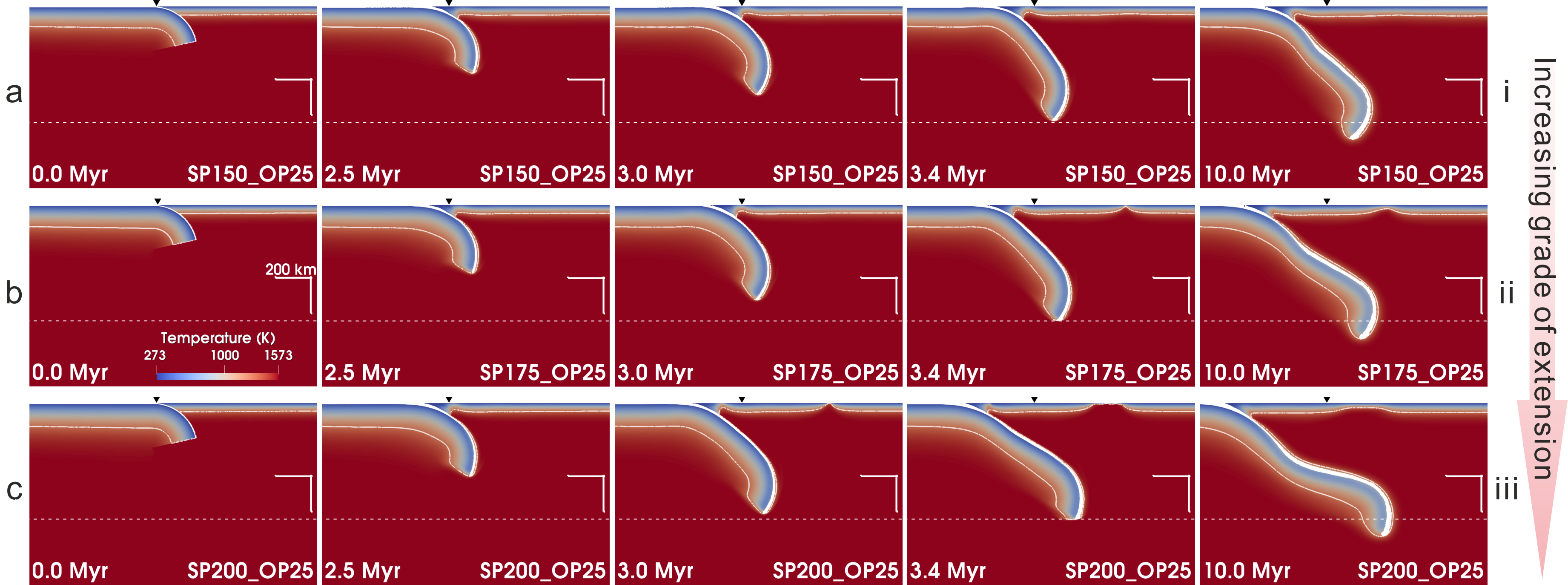 Comparison of thermal state for models with increasing trench retreat rate.
Comparison of thermal state for models with increasing trench retreat rate.
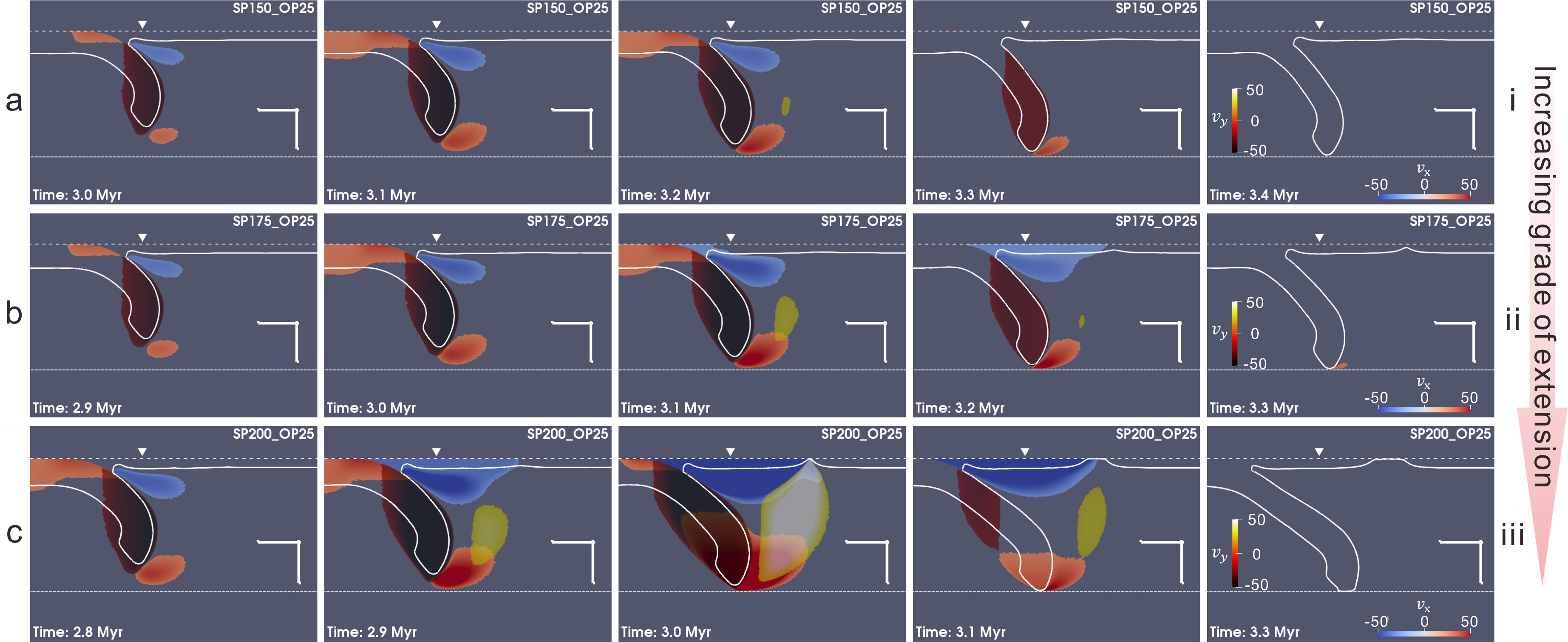 Comparison of horizontal & vertical velocity component for models with increasing trench retreat rate, suggesting that non-uniform basal drag accounts for the rifting and spreading back-arc area.
Comparison of horizontal & vertical velocity component for models with increasing trench retreat rate, suggesting that non-uniform basal drag accounts for the rifting and spreading back-arc area.
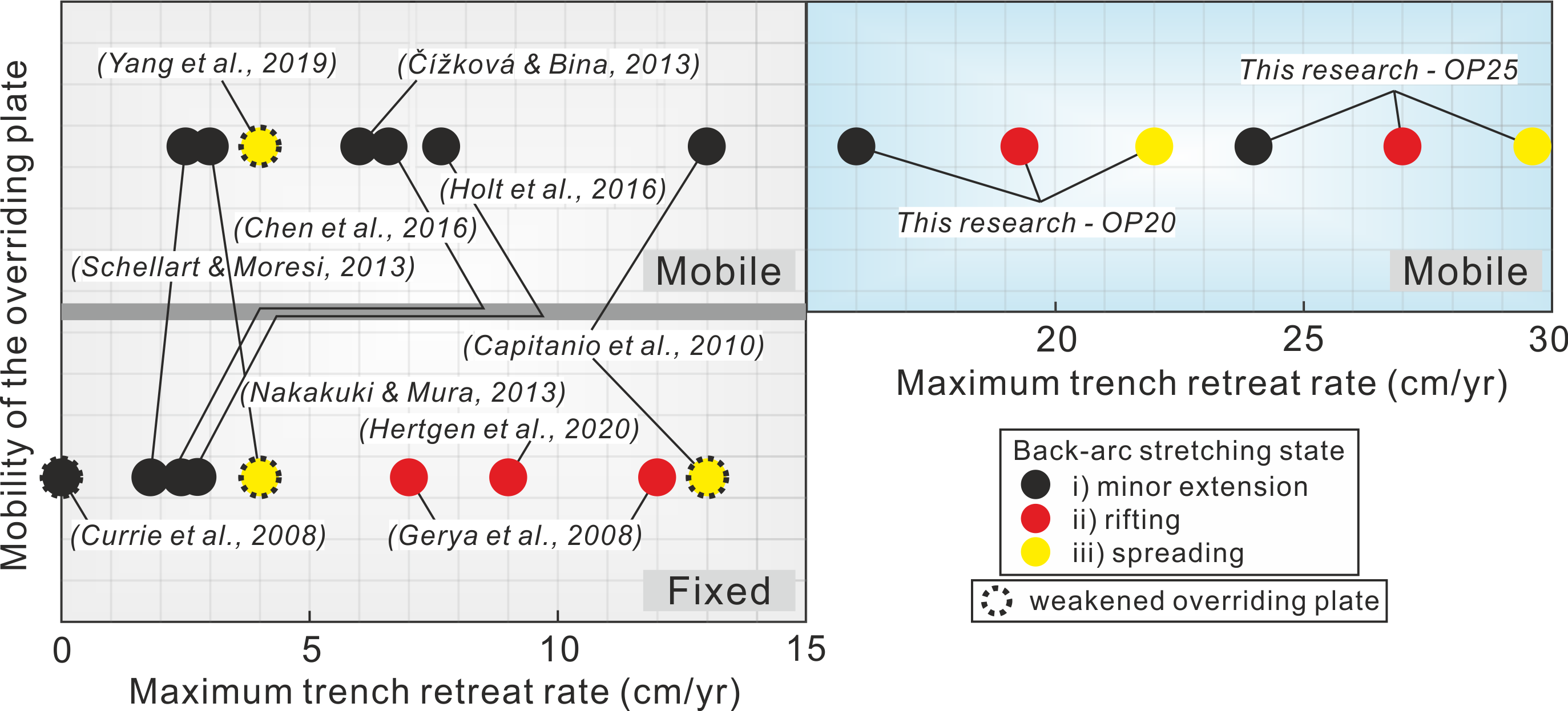 Contribution of this work relative to previous work.
Contribution of this work relative to previous work.
Dual inward dipping subduction (DIDS) & progressive weakening within the overriding plate
Relative to SSS, DIDS can generate: 1) fixed boundary condition for the middle overriding plate 2) a stronger united upwelling mantle flow. Both effects contribute to the progressive weakening, exbited as viscosity reduction, within the overriding plate.
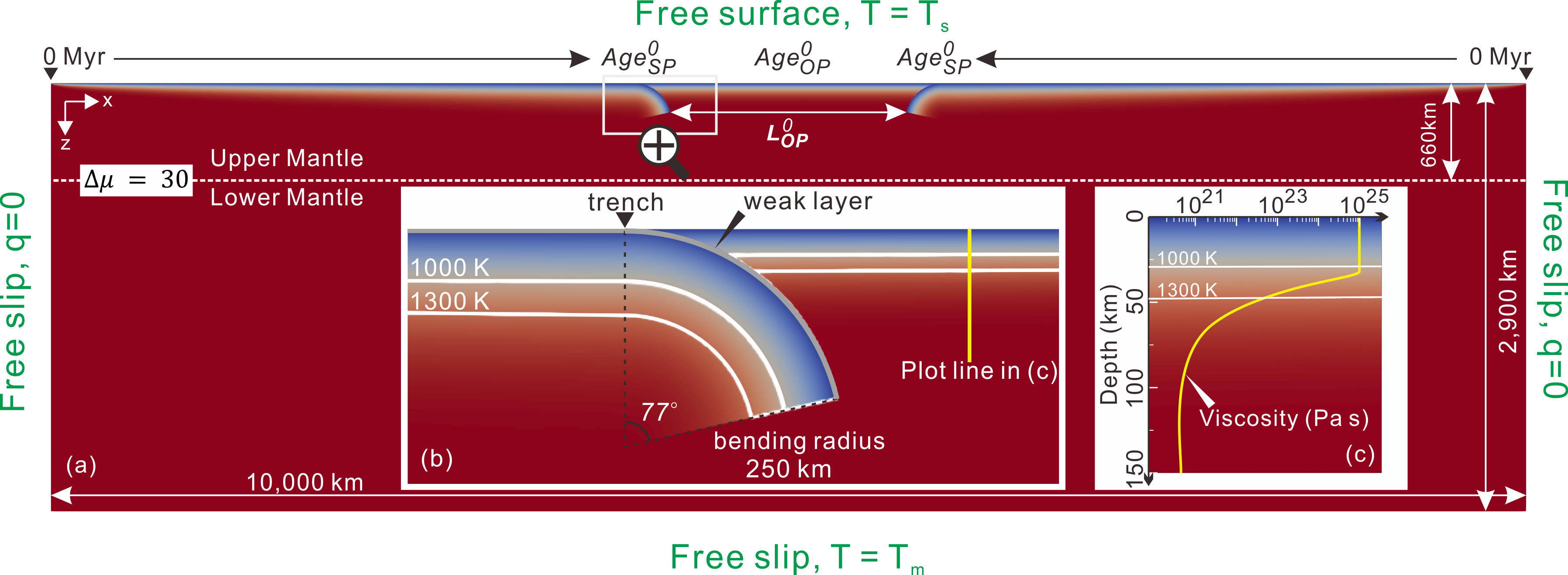 Model setup
Model setup
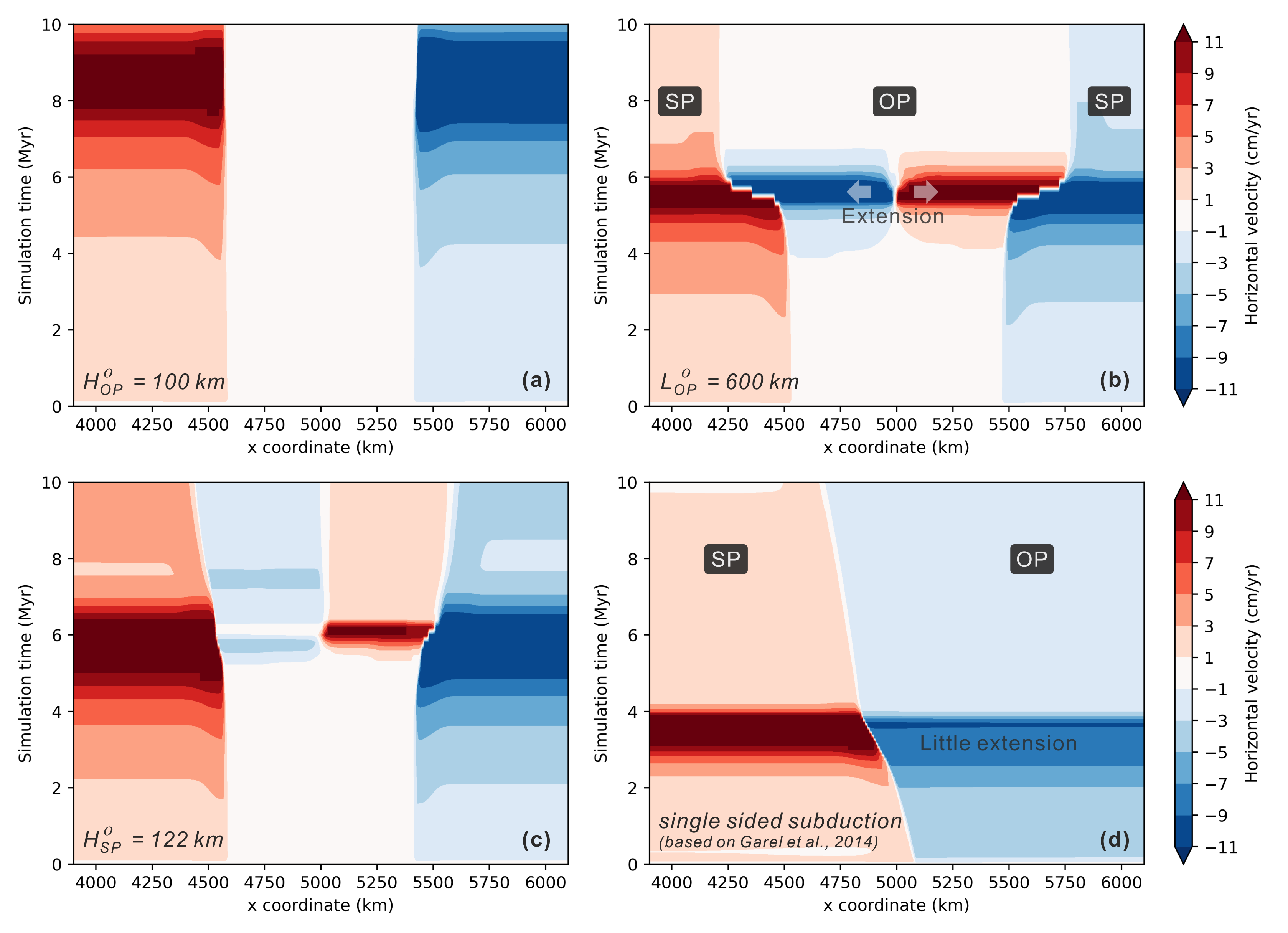 Temporal evolution of horizontal velocity component for DIDS and SSS.
Temporal evolution of horizontal velocity component for DIDS and SSS.
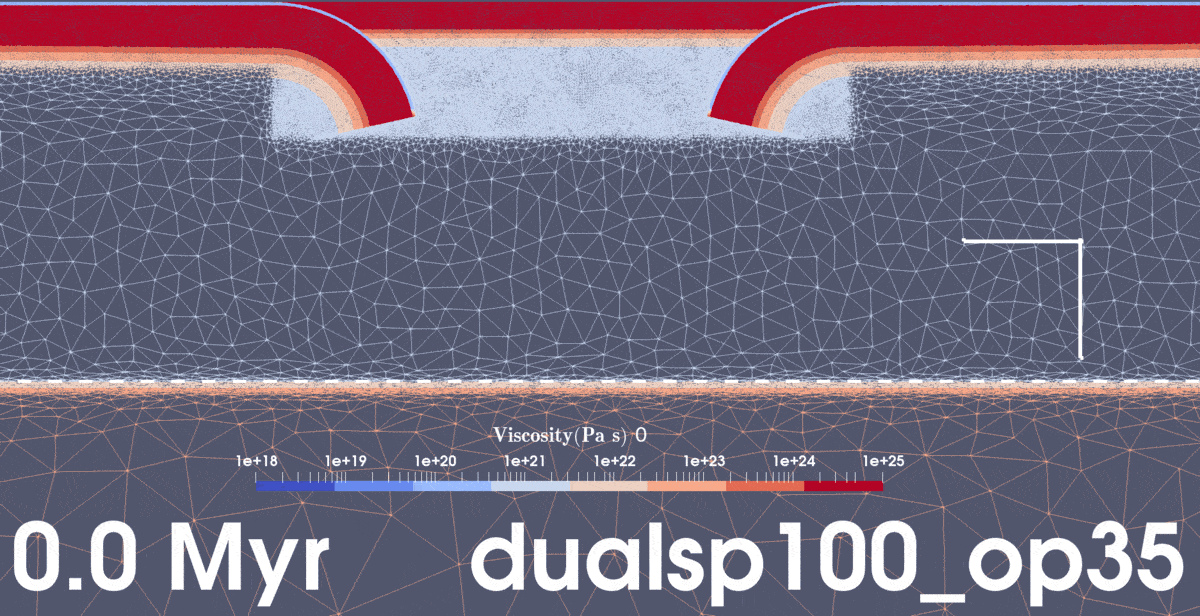 Animation of plate weakening (viscosity reduction) in a DIDS model.
Animation of plate weakening (viscosity reduction) in a DIDS model.
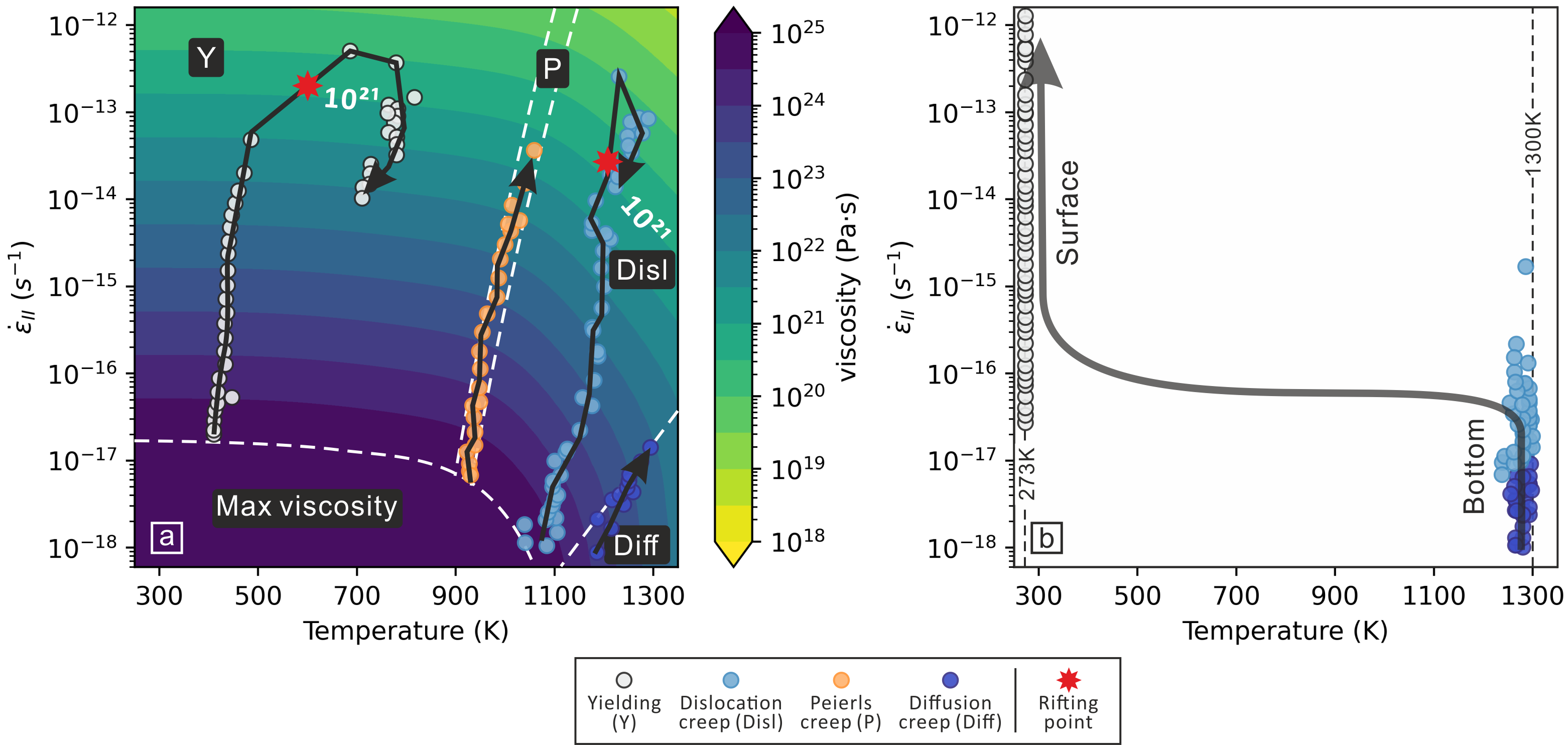 Dominant deformation analysis for a DIDS model that pull apart the overriding plate, indicating that dislocation and yielding plays the dominant role to weaken the overriding plate.
Dominant deformation analysis for a DIDS model that pull apart the overriding plate, indicating that dislocation and yielding plays the dominant role to weaken the overriding plate.
